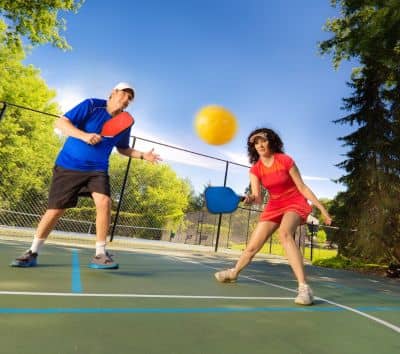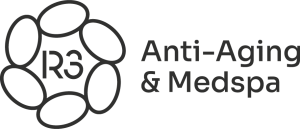Pickleball is one of the fastest-growing sports in America. Over 3.5 million people played pickleball in 2021, an increase of 39.3% from 2019, according to USA Pickleball. Pickleball combines elements of tennis, badminton, and table tennis and is popular among seniors due to its lower impact nature than other racquet sports.
However, the rapid growth of pickleball participation has also led to an increase in pickleball-related injuries. A recent study published in Injury Epidemiology found that non-fatal pickleball injuries among seniors (age 60+) treated in U.S. emergency departments increased by 1,200% from 2010 to 2019. The most common injuries were strains, sprains, fractures, and lacerations affecting the lower extremities, shoulder, and elbow.
Recovery can feel daunting if you’ve suffered a pickleball injury like a rotator cuff tear or tennis elbow. You may be facing choices between pain medication, surgery, physical therapy, or simply giving up pickleball entirely.
However, there is a regenerative medicine option that can help you heal faster and get back in the game – stem cell therapy. Keep reading to learn how stem cell therapy works and how it can help you recover from common pickleball injuries.
What are the Most Common Pickleball Injuries and Their Causes?
Before exploring how stem cell therapy can help, look at some of the most frequent pickleball injuries and their causes.
Rotator Cuff Tears
A rotator cuff tear involves partial or complete tearing of one or more tendons in the shoulder’s rotator cuff muscles. Rotator cuff tears are one of the most common pickleball shoulder injuries. Over time, the repetitive overhead motions of serving and spiking the ball can overwork and fatigue the rotator cuff tendons.
Symptoms of a rotator cuff tear include shoulder pain, stiffness, tenderness, swelling, bruising, weakness, and reduced range of motion. An MRI or ultrasound scan can help diagnose a rotator cuff tear. Small tears may heal with rest and physical therapy, but larger or complete tears often require surgery to repair the damaged tendon(s).
Lateral Epicondylitis (Tennis Elbow)
Lateral epicondylitis, also known as tennis elbow, is inflammation of the tendons that attach the forearm muscles to the bony prominence on the outside of the elbow joint. It is caused by repetitive stress from the backhand swing motion in racket sports. When hitting balls with the paddle, pickleball’s repetitive impact can lead to tennis elbow.
Symptoms include pain and tenderness on the outside of the elbow. Pain typically increases with activities like gripping the paddle, forearm twisting, and lifting objects. Tennis elbow is usually diagnosed based on physical examination, but imaging or EMG tests may also be used. Mild cases can improve with rest, icing, bracing, and physical therapy. More severe cases may require steroid injections or surgery.
Patellar Tendinitis (Jumper’s Knee)
Patellar tendinitis, also known as “jumper’s knee”, is inflammation of the patellar tendon that connects the kneecap to the shinbone. It is caused by overuse from repetitive jumping and landing movements. In pickleball, frequent lunging and pivoting can strain the patellar tendon.
Symptoms include pain below the kneecap that worsens with activity. Jumper’s knee is typically diagnosed based on physical examination and imaging tests like MRI or ultrasound. Treatment usually involves rest, icing, physical therapy, knee braces, taping, and anti-inflammatory medication. In severe cases, steroid injections or surgery may be recommended.
Ankle Sprains
Ankle sprains are stretching or tearing of the ligaments that stabilize the ankle joint, usually on the outer side of the ankle. They are one of the most common pickleball lower extremity injuries, caused by rolling the ankle during quick direction changes and lunges on the court.
Symptoms include pain, swelling, bruising, and ankle joint instability. Diagnosis is made by physical examination, and X-rays may be done to rule out a fracture. Grade 1 sprains involve over-stretching the ligament, while grade 2 and 3 sprains involve partial and complete ligament tears. Treatment includes rest, icing, compression, elevation, immobilization with a brace or cast, and physical therapy.
 Stress Fractures
Stress Fractures
Stress fractures are tiny cracks in the bone caused by repetitive impact and overuse. In pickleball, stress fractures often occur in the metatarsals of the foot or lower legs from frequent lunging and pivoting movements.
Symptoms of a stress fracture include pain that worsens with activity and improves with rest. Diagnosis involves X-rays, CT scans, or MRIs. Treatment includes rest, immobilization with a walking boot, pain medication, ice, and physical therapy. Complete healing takes 6 to 8 weeks on average.
Revive your game with R3 Anti-Aging! Experience cutting-edge Stem cell therapy for pickle ball injuries today. Schedule your free consultation by dialing (833) R3-AGING
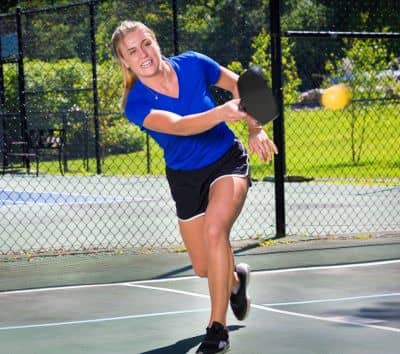
Now that you know some of the most common pickleball injuries, let’s discuss how to stem cell therapy can help you recover from them.
Stem cell therapy is a regenerative medicine that uses stem cells to repair damaged tissue. Stem cells are special human cells that can differentiate into many different cell types, including bone, cartilage, tendon, ligament, and muscle cells. Stem cell therapy delivers stem cells to the injured area, where they can reduce inflammation and stimulate healing.
There are two main types of stem cell therapy used for orthopedic conditions:
- Bone marrow stem cells (BMSCs) – These are collected from the patient’s pelvic bone marrow. BMSCs contain various stem cells, including mesenchymal stem cells that can regenerate musculoskeletal tissues.
- Adipose Stem Cell Therapy in Scottsdale – These are collected from the patient’s belly fat using liposuction and administered at our Scottsdale clinic. ADSCs are an abundant source of mesenchymal stem cells with robust regenerative abilities.
Let’s look at how stem cell therapy can treat some common pickleball injuries.
 Rotator Cuff Tears
Rotator Cuff Tears
A clinical study published in the Journal of Shoulder and Elbow Surgery evaluated 18 patients with rotator cuff tears treated with ultrasound-guided ADSC injections. At 6 and 12 months after injection, significant improvements were found in shoulder function, pain, and quality of life compared to placebo. 83% of ADSC patients achieved a successful outcome versus only 17% of controls.
John S., a 68-year-old avid pickleball player, had a severe rotator cuff tear diagnosed by MRI. Despite trying physical therapy and cortisone injections for months, he had persistent shoulder pain and weakness that interfered with his pickleball play. He underwent an ADSC injection procedure under ultrasound guidance. Six weeks after the stem cell treatment, John’s shoulder pain had resolved by 80%, his range of motion had improved by 30%, and his muscle strength had increased substantially. He was able to return to playing pickleball pain-free.
Lateral Epicondylitis (Tennis Elbow)
A randomized trial compared platelet-rich plasma (PRP) versus adipose-derived stem cells (ADSCs) for chronic tennis elbow. Fifty patients were treated with a PRP or ADSC injection into the elbow tendon. After 6 months, both PRP and ADSC groups had significantly reduced pain and improved function compared to baseline. However, the ADSC group had lower pain scores and higher function than the PRP group, indicating superior healing with stem cells over PRP alone.
Jane F., a very active 72-year-old, developed progressively worsening lateral elbow pain from pickleball, impairing her backhand swing and forehand grip strength. After trying rest, physical therapy, bracing, and medication without sufficient relief, she opted for an ultrasound-guided ADSC injection to her elbow. Within a month, Jane regained full elbow extension and flexion, reduced her pain by 90%, and she could play pickleball again free of symptoms.
Ready to get back in the game? Reach out to R3 Anti-Aging now! Discover the power of Stem cell treatment for pickle ball injuries. Call us at (833) R3-AGING for a complimentary consultation.
 Patellar Tendinitis (Jumper’s Knee)
Patellar Tendinitis (Jumper’s Knee)
A pilot study evaluated 10 patients with patellar tendinitis treated with ultrasound-guided injection of platelet-rich plasma (PRP) into the patellar tendon. After 6 months, significant improvements were found in knee pain scores, function, and ability to return to sports. 80% of patients had returned to pain-free athletic participation. Two patients went on to have surgery after failing conservative and PRP treatment.
Mark R., a competitive 55-year-old pickleball player, developed severe patellar tendon pain and stiffness over several months, forcing him to stop playing. After two months of physical therapy and rest, failing to resolve his jumper’s knee, he opted for an ADSC injection.
After two months of physical therapy and rest, failing to resolve his jumper’s knee, he opted for an ADSC injection. The ADSCs were injected under ultrasound guidance directly into the patellar tendon. Six weeks after the stem cell treatment, Mark’s pain was reduced by 70%, and his knee range of motion had improved significantly. He was gradually able to resume pickleball training drills. By four months post-injection, Mark had returned to competitive league pickleball play without patellar tendon pain or functional limitations.
Achilles Tendinitis
A case report described a 48-year-old man with chronic severe Achilles tendinitis. He had failed 6 months of conservative treatments and was considering surgery. He was treated with an ultrasound-guided injection of ADSCs into his Achilles tendon. At one month follow-up, his pain was reduced by 90%, and his ankle strength and function had greatly improved. After 6 months, he was completely pain-free and playing sports normally.
Ankle Sprain
Ankle sprains are traditionally treated with rest, ice, compression, elevation, bracing, and physical therapy. However, a randomized trial found that patients who received an injection of bone marrow concentrate (which contains stem cells) following acute ankle sprain had significantly faster improvements in pain, function, and ankle range of motion compared to physical therapy alone. This demonstrates the healing benefits of stem cells for ankle ligament injuries.
As you can see from these studies and examples, stem cell therapy shows great promise as an effective treatment for many common pickleball injuries like rotator cuff tears, tennis elbow, patellar tendinitis, Achilles tendinitis, and ankle sprains. The growth factors and anti-inflammatory properties of stem cells can help speed healing, reduce pain, improve function, and prevent recurrent injuries. This allows many athletes to resume their sport after failing rest and conventional therapies.
Don’t let pickle ball injuries hold you back! Connect with R3 Anti-Aging and explore Stem cell therapy for a speedy recovery. Dial (833) R3-AGING to book your free consultation.
What are the Benefits and Challenges of Stem Cell Therapy for Pickleball Injuries?

Some benefits of stem cell therapy include:
- Minimally invasive: Only an injection is needed, avoiding surgery.
- Convenient: Can be done quickly in an outpatient clinic.
- Effective: Significantly improves outcomes for many conditions.
- Natural: Uses your body’s stem cells to heal.
- Safe: Very low risk of complications when performed properly.
- Reduces inflammation: Provides natural anti-inflammatories.
- Promotes regeneration: Stimulates growth of new tissue.
- Fast recovery: Many return to sports within a few months.
- Durable results: Long-term healing versus temporary relief.
- Cost-effective: Single treatment with long-lasting results over time.
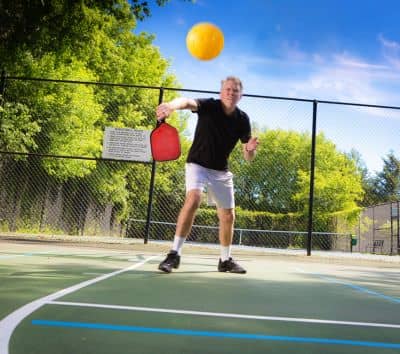
- Variable results: Some patients respond much better than others.
- Multiple treatments: More than one injection may be needed.
- Not covered by insurance: Out-of-pocket costs limit access for some patients.
- Limited availability: Only offered at some specialized clinics.
- Off-label use: Not yet FDA-approved for orthopedic conditions (except knee arthritis).
- Unknown long-term data: Optimal dosing and durability beyond 2 years need more study.
- Rare side effects: Like infection, calcification, or increased pain.
- No stem cell certification: Lack of formal training standards for providers.
So, in summary, stem cell therapy offers many benefits, including safety, convenience, faster return to activity, and durable results. However, insurance coverage is limited, treatment protocols vary, long-term data is scant, and a skilled provider is crucial for optimal outcomes. More research is underway to refine techniques and confirm benefits.
How to Find a Qualified Stem Cell Therapy Provider for Your Pickleball Injuries
Finding a provider with the proper qualifications and expertise is important if you think you might benefit from stem cell therapy. Here are a few tips:
- Look for a regenerative medicine physician with an orthopedics, sports medicine, or pain management background. They will have the most clinical experience with musculoskeletal conditions.
- Choose a provider who uses ultrasound or fluoroscopy guidance for injections. This ensures accurate placement into the injured structure.
- Ask if they use live imaging to guide the needle. This allows precision real-time targeting.
- Find out where and how the stem cells are processed and lab tested for safety and quality.
- Be sure the cells are harvested and injected on the same day for maximum potency.
- Select a provider who specializes in stem cells and regularly treats orthopedic injuries. Ask how many similar procedures they have performed.
- Look for membership in a respected society like the American Society for Stem Cell Therapy (ASCTC). This demonstrates dedication to best practices in regenerative medicine.
- Check reviews online and ask for patient references to contact. This can help assess real-world results.
- Beware of stem cell clinics offering too-good-to-be-true patient testimonials or claims about “stem cell shots.”
- Avoid providers who use standalone clinics, high-pressure sales, make exaggerated promises, or rush you into treatment.
Take the time to screen potential stem cell therapy providers carefully. An experienced doctor who uses well-validated techniques will give you the best chance of success.
Experience the future of healing at R3 Anti-Aging! Unlock the potential of Stem cell treatment for pickle ball injuries. Call (833) R3-AGING to schedule your free consultation.
What are Some Tips and Best Practices for Preventing and Treating Pickleball Injuries?
Let’s wrap up with some tips to help you prevent and manage pickleball injuries, whether you opt for stem cell therapy or more conservative treatment.
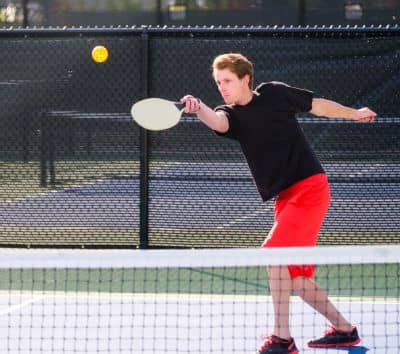
- Warm up properly with light cardio, dynamic stretching, and practice swings
- Cool down with light cardio, static stretching, and gentle swings
- Wear proper athletic shoes designed for court sports
- Use quality paddles sized and weighted for your body and skill level
- Play on regulation pickleball courts with appropriate surfaces and lighting
- Take lessons from a certified pro to ensure you learn the proper form
- Strength training off-court to build endurance, balance, and stability
- Cross-train and vary activities to avoid overusing the same muscles
- Hydrate well before, during, and after play
- Listen to your body and take time off when sore or fatigued
Injury Treatment Tips
- Immediately ice new injuries to reduce swelling and inflammation
- Use compression sleeves on the elbow, knee, or ankle to limit swelling
- Take OTC anti-inflammatories short-term to ease pain and swelling
- Rest the injured area to allow tissues to heal – avoid “playing through pain.”
- Immobilize joints that are unstable with a brace or tape to prevent further injury
- Elevate injured extremities above heart level to improve drainage
- See a doctor if severe pain, swelling, or loss of function persists beyond 2 weeks
- Consider consulting a regenerative medicine physician about stem cell therapy options
- Follow all rehab and exercise recommendations from your physician
- Return to play only after full recovery of flexibility, strength, and function
Putting into practice injury prevention habits, prompt self-care when injuries arise, and seeking appropriate medical treatment can help you stay active playing pickleball for years. Stem cell therapy is one innovative option if you develop a painful overuse injury or need to recover from surgery. With the right approach, you can keep playing pickleball safely and pain-free well into your golden years.
Pickle ball injury holding you back? Break free with R3 Anti-Aging’s Stem cell treatment. Reach out to us at (833) R3-AGING to schedule your complimentary consultation.
Risks and side effects of stem cell therapy
While stem cell therapy shows promise, as with any medical procedure, there are risks and side effects. The risks and side effects of stem cell therapy include:
- Infection: As with any injection procedure, there is a small risk of infection at the injection site or spread to other parts of the body. Precautions like sterile technique and antibiotic medications can help minimize this risk.
- Tumor growth: Very rarely, stem cells can begin to multiply uncontrollably and form tumors. However, with proper donor screening and stem cell processing, the risk of tumor formation is extremely low.
- Allergic reactions: Some patients may have an allergic reaction to components of the stem cell product like carrier fluids or growth factors. Providers screen for allergies beforehand to reduce this risk.
- Improper stem cell differentiation: There is a theoretical risk that stem cells could differentiate into the wrong cell types, potentially causing problems. However, this has rarely if ever been reported in actual patients.
- Increased pain: Some patients report temporary worsening of pain in the days following stem cell treatment. This is usually due to local inflammation that subsides with medications and rest.
- Calcification: There are isolated reports of stem cells forming calcifications (mineral deposits) in tendons and joints months after treatment. However, it is not clear if stem cell therapy directly causes this.
- Lack of long-term data: Most studies of stem cell therapy follow patients for 2 years or less. The longer-term safety, efficacy, and durability of stem cell treatments beyond 5-10 years are not yet established.
- Cost: Out-of-pocket expenses for stem cell therapy can be high since currently, most insurance plans do not cover it.
Experience the power of Stem cell therapy at R3 Anti-Aging! Say goodbye to pickle ball injuries. Call us today at (833) R3-AGING for a free consultation.
Stem Cell Therapy for Healing and Regeneration at R3 Anti-Aging
For patients seeking stem cell and regenerative treatment options to speed healing and recovery from pickleball injuries, R3 Anti-Aging offers adipose and bone marrow stem cell therapy. R3 has administered over 20,000 regenerative procedures for shoulder, knee, elbow, and foot conditions.
In addition to cutting-edge stem cell therapies, R3 provides PRP injections, IV therapy, hyperbaric oxygen, hormone optimization, and medical aesthetic treatments to transform your health from the inside out. Schedule a free consultation today with a physician trained in stem cell therapy specifically for orthopedic injuries at R3’s Scottsdale or Nashville locations by visiting our website: R3 Anti-Aging

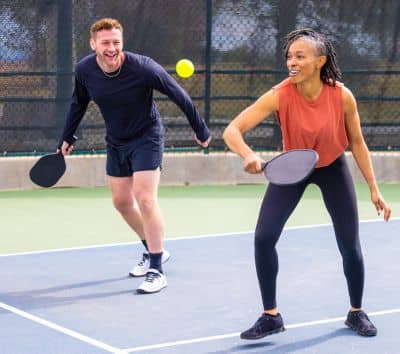 Stress Fractures
Stress Fractures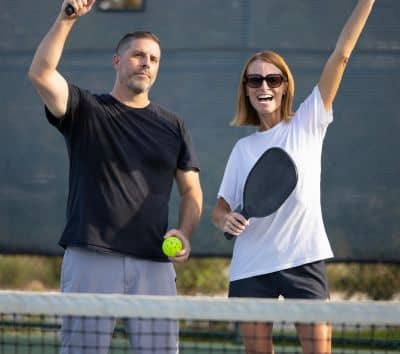 Rotator Cuff Tears
Rotator Cuff Tears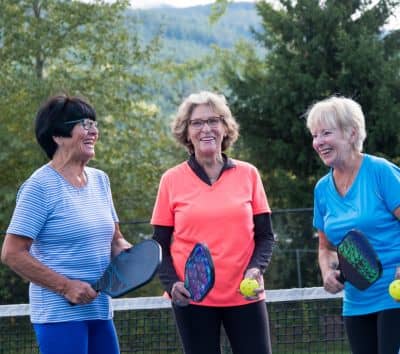 Patellar Tendinitis (Jumper’s Knee)
Patellar Tendinitis (Jumper’s Knee)